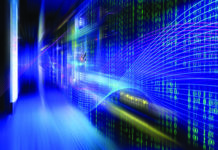 Data centres have undergone massive changes in recent years. Once viewed as potential environmental villains due to their intense energy consumption and the associated carbon emissions. However advanced Uninterruptible Power Supply (UPS) technologies have the potential to turn them into environmentally friendly heroes while maintaining 100% uptime, proving that data centres can be part of the solution, not part of the problem. Ciaran Forde, data centre segment lead at Eaton explains
Data centres have undergone massive changes in recent years. Once viewed as potential environmental villains due to their intense energy consumption and the associated carbon emissions. However advanced Uninterruptible Power Supply (UPS) technologies have the potential to turn them into environmentally friendly heroes while maintaining 100% uptime, proving that data centres can be part of the solution, not part of the problem. Ciaran Forde, data centre segment lead at Eaton explains
It is hard to imagine the elements of our lives that aren’t facilitated, somehow, by data centres. Cloud and digitisation are the new norm for individuals and companies. If we were ever any doubt of this, it was thrown into focus by the global reaction to the COVID-19 pandemic this year. With lockdowns and social distancing rules in place, many countries saw the bulk of their workforces move to remote working, while social lives moved online more than ever before. In fact, at the beginning of the pandemic,BT reported a 35% to 60% increase in daytime weekday fixed broadband usage. Businesses and consumers alike increasingly rely on 24/7, ‘always on’ digital infrastructure and as a result, more and more data centres are being built to handle the surge in data processing required to enable this digital-first lifestyle.
Currently, some estimates say data centres account for around 3 per cent of global energy demand. As data centre usage grows, the world is starting to pay attention. A recent BBC documentary calculated that streaming thirty hours of television produces carbon emissionssimilar to driving 100 miles. Consumers who are becoming increasingly aware of the impact of their online lives on the planet, will search for lower impact options but making data centres greener would go a long way to solving the problem.
Fighting pressure in a pandemic
The shift from office to remote working has meant that data centres are consuming a lot more energy and producing a lot more carbon. An analysis from Nokia suggests that overall internet traffic hasincreased by 25 per centover pre-pandemic levels. Even if the world were to go back to its pre-pandemic habits, we would still expect to see data centres become one of the world’s major energy users going forwards: according to Akamai, the traffic growth we’ve seen recently would havehappened over the course of a yearanyway.
However, by contrast Naturesuggests that carbon emissions during early April were17% lower than usual, and while remote working will not have accounted for all of that reduction, the potential for different patterns of work to help reduce environmental impact is clear. The fact that so many businesses were able to keep operating in completely remote circumstances is, of course, testament to the power of networking and data centres. What’s more, millions of workers around the world turning to the cloud to get their jobs done revealed how significant remote work might be as a strategy for carbon emissions reduction. As tragic as the pandemic has been, it has also been an accelerator in terms of companies and people adopting digital strategies and technologies that perhaps were in a latent state. Now the are embraced, front and centre to our work and social lives.
The potential of UPS technologies
A limiting factor on the adoption of renewable energy at grid level is it lack of intertia. The grid need inertia to maintain grid frequency. UPS technologies can help data centres provide fast response and help to tackle issues related to low inertia and frequency containment by providing grid system (ancillary) services. This can then help to increase adoption of renewables reducing reliance on fossil fuels sources.
Beyond the positive environmental impact, EnergyAware UPS technologydevices can also generate value for data centres. By adopting smart time-of-use and peak shaving strategies, data centre managers can save on energy costs. But it can also allow businessesto profit from existing UPS investment through helping grid operators balance the system and regulate frequency. These significant fee-earning services can provide a healthy revenue stream. The EnergyAware UPS creates a bidirectional relationship with the grid and helps operators better manage frequency and keep it within its tight regulatory and operational limits. So in addition to accelerating the adoption of renewables, generating revenue, the data centre UPS itself ensures the secure performance of the grid upon which it primarily depends.
Moving to a future centred on renewable energy is necessary to counteract the effects of human induced climate change and it is increasingly clear that new technologies sit at the core of our success. Given that data centres are crucial to the functioning of our digital environments there is a unique opportunity to leverage this power to give back to the grid whilst maintaining functionality, uptime and driving the overall performance of deployments.
Becoming an energy hero
The increased electrification of society means we need a way to balance growing demand for energy with the urgency for the adoption of renewables. Renewable usage on the grid requires close management given their variable nature, and this is where the large electrical capacity of a data centre can step in. By using its reserves to account for the effect of this variability, data centres can help to manage sudden disturbances in energy production and so can allow the entire grid to become greener as it makes the move to renewable energy sources. It is this ability to simultaneously reduce power failures and carbon energy usage which signifies the potential of data centres as environmental champions, instead of energy villains that only consume electricity.




From the benefits that UPS brings, the popularity is only a matter of time. In the future UPS is not only popular in data centers but also in companies and even households because the benefits that UPS bring are great.